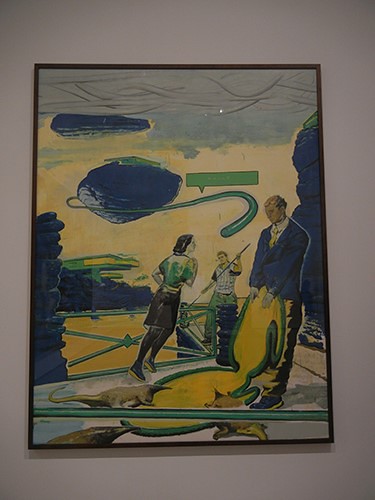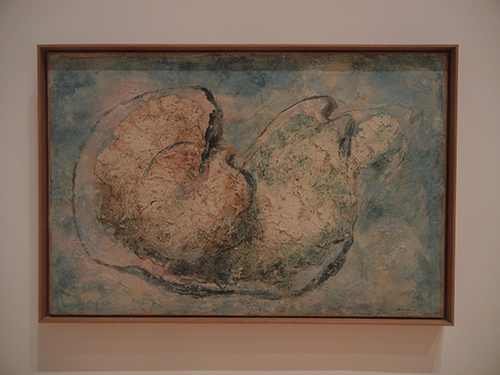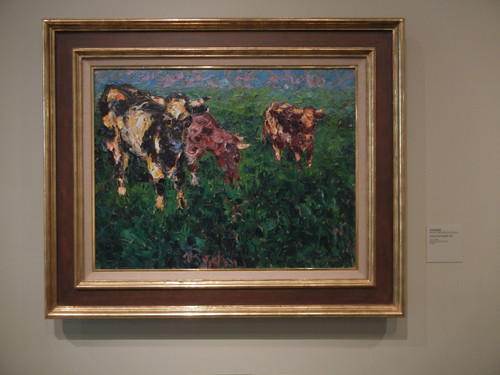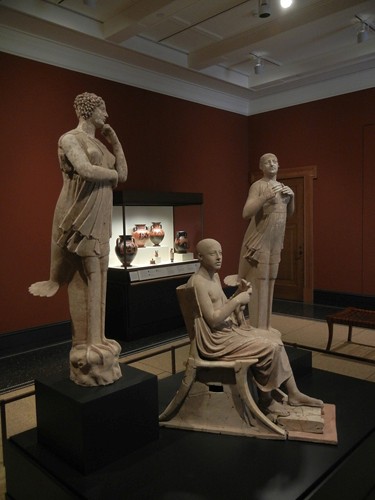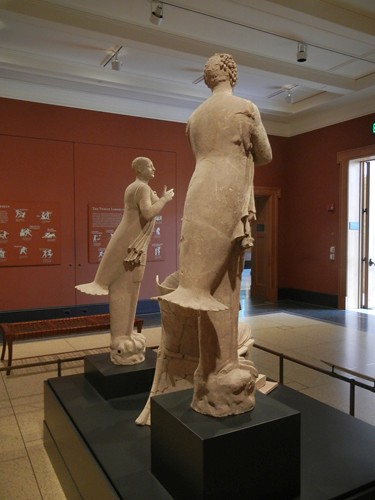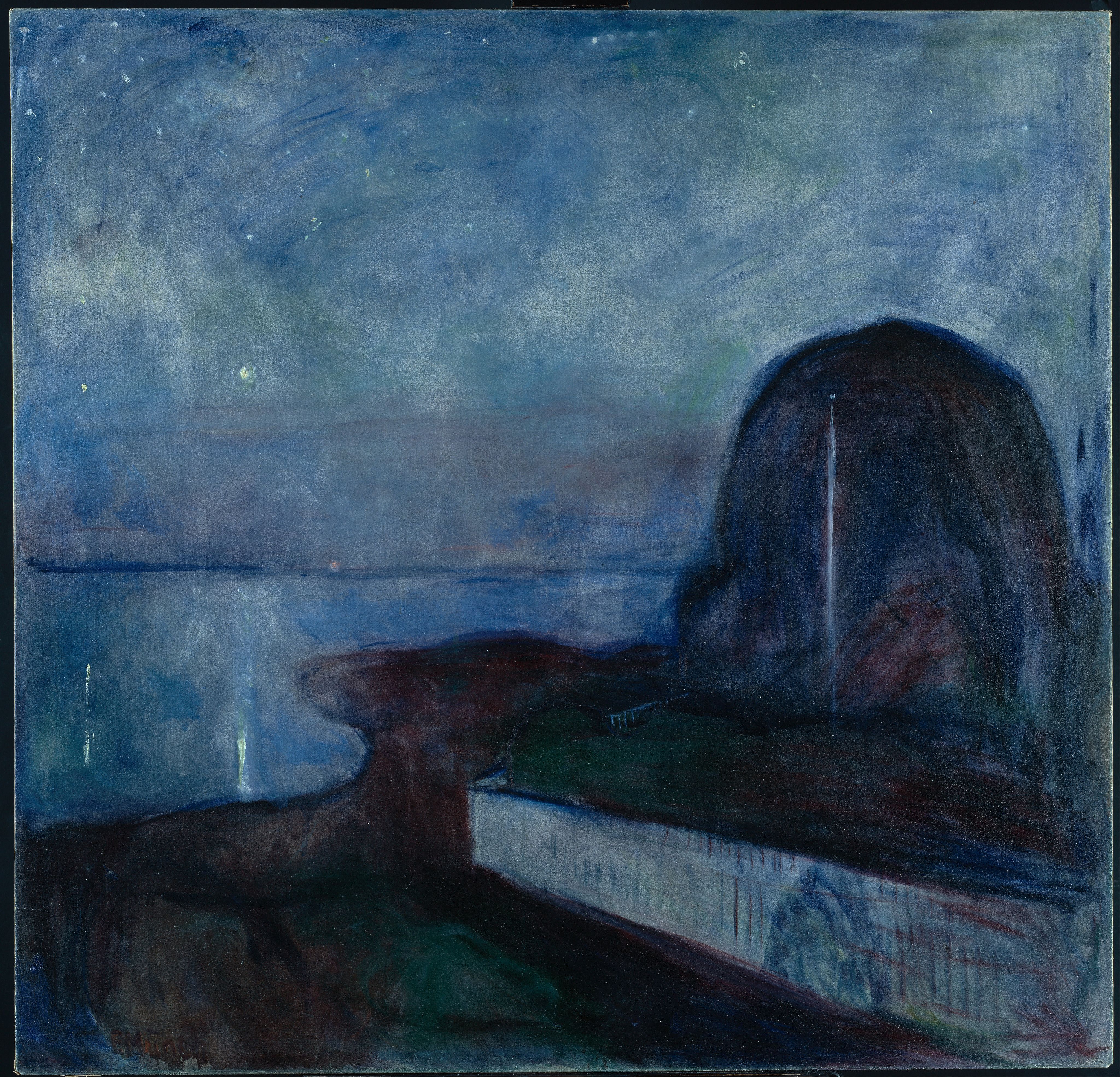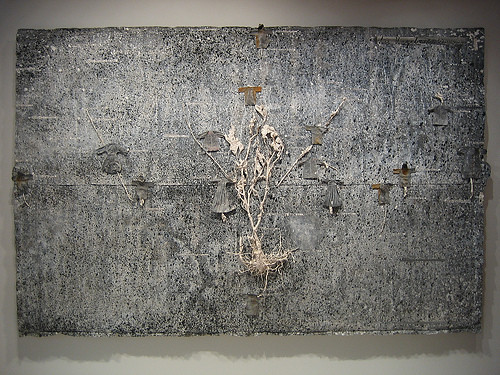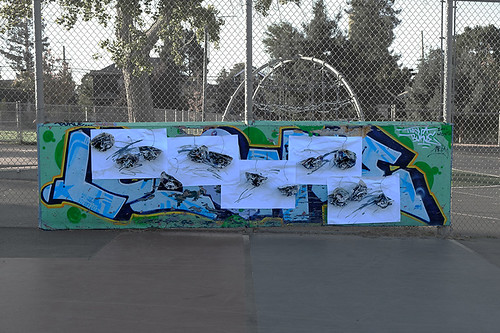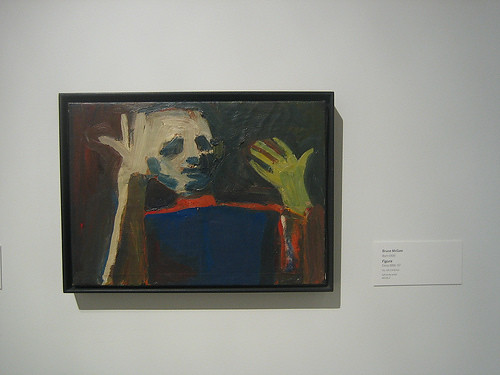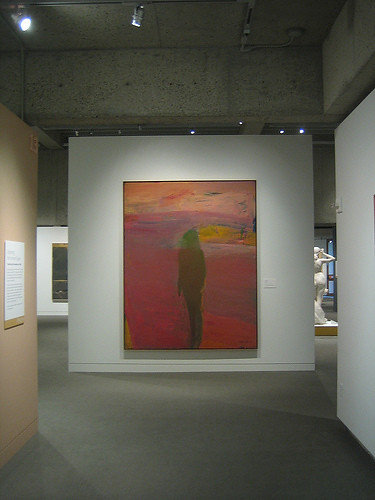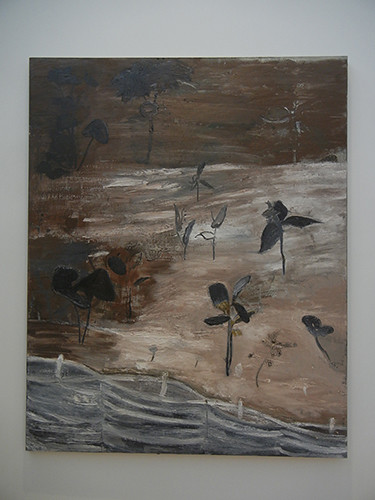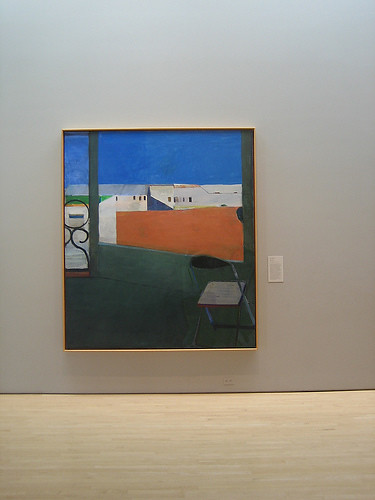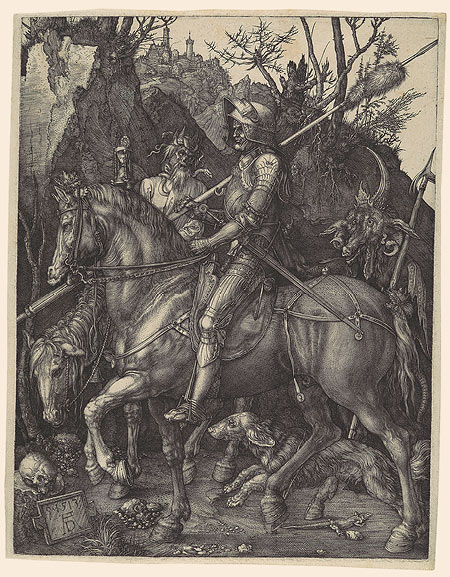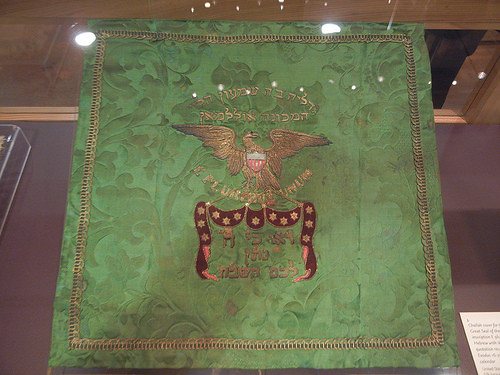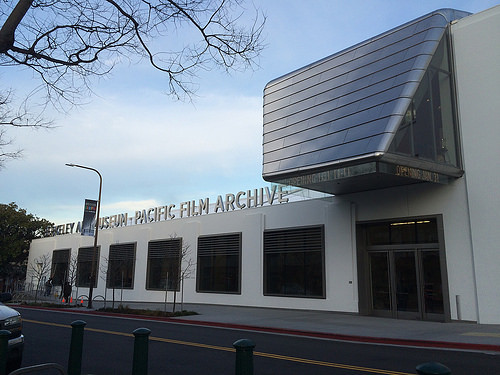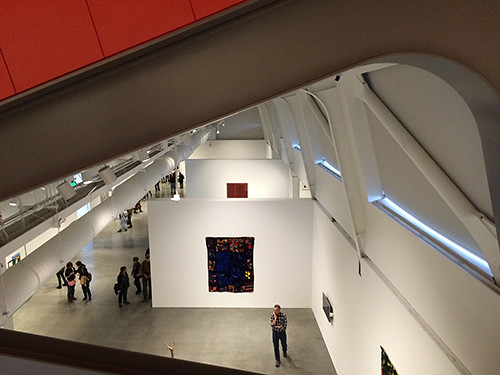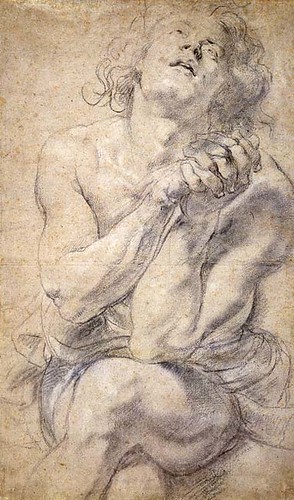My favorite painting was The Black Shawl (Lorette VII) (1918) by Henri Matisse. This Matisse was striking with his surprising color harmony, his usual motifs of exaggerated flowery patterns, and the strange sensuality he achieved. The lying figure, Lorette, we assumed, in her provocative yet pensive pose, looked like mermaid or a siren, thanks to her form-fitting sheen black gown laced with bold floral patterns resembling large scales, and an extra length of fabric around her bare feet, like a tumbling tail. The figure in black really stood out on the pale red bedding, covered with large pale green leafy patterns, whose color reflected on the slightly more yellow tinged walls wrapping around her bed and thrusting the sitter to the viewer. The siren, looking directly into the viewer, had a sad expression on her face, slightly accusative, for neglect, or boredom, perchance? One could easily imagine this Lorette as being in a harem. A strange work of understated and seductive beauty, and enigmatic sentiment.

The Black Shawl (Lorette VII), 1918, Henri Matisse (1869-1954)
My second favorite was a portrait by Rembrandt van Rijn of his son Titus as a little boy, titled as Portrait of a Boy (1655-60). This unnamed boy, in his brown tunic, big black velvet hat with red feathery or flowery decoration, small band of white laced collar, with his soft blond hair, pink cheeks, gentle smile, was most angelic, adorable, and somewhat worrisomely vulnerable. The love, adoration, and worry from the doting father was most evident and touching.
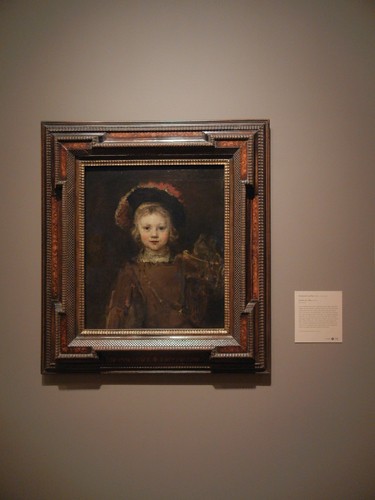
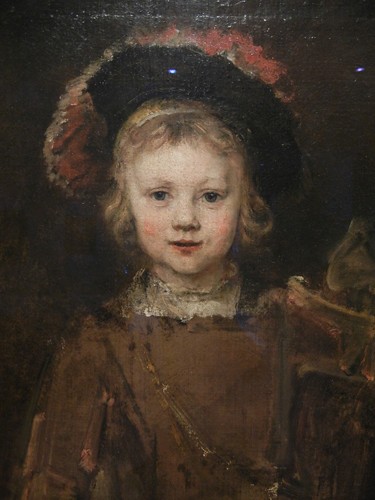
Portrait of a Boy, 1655-60, Rembrandt van Rijn (1606-1669)
My Favorite Museum Collection Series
>> My Favorite Museum Collection Series 158: Blanton Museum of Art, The University of Texas at Austin
<< My Favorite Museum Collection Series 156: My Favorite Paintings at the Broad Museum, Los Angeles
List of My Favorite Artworks in the Museums I've Visited
Other Related posts on Art · 文化 · Kunst:
- LACMA - Los Angeles County Museum of Art
- Getty Villa in Los Angeles (Malibu)
- The Museum of Contemporary Art (MOCA) in Los Angeles
- Brand New Contemporary Art Museum - The Broad Museum in Los Angeles
- Urs Fischer Exhibit at MOCA, Los Angeles
- Revisiting Norton Simon Museum in Pasadena
- Anderson Collection at Stanford University
- Paintings at Cantor Arts Center, Stanford University
- Surprisingly Urbane Los Angeles

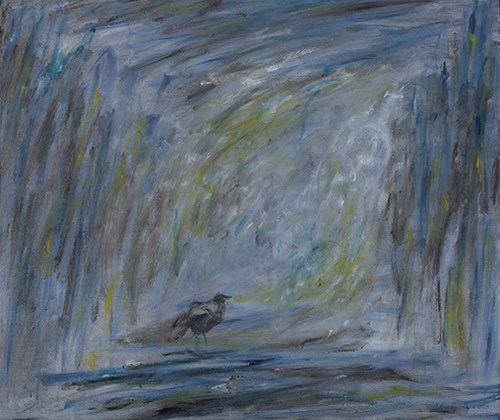
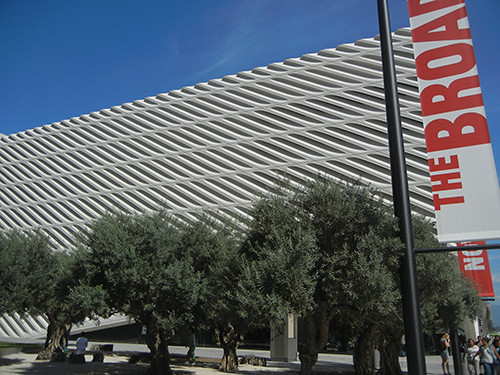
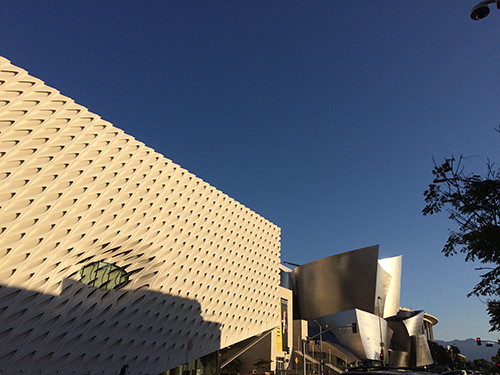
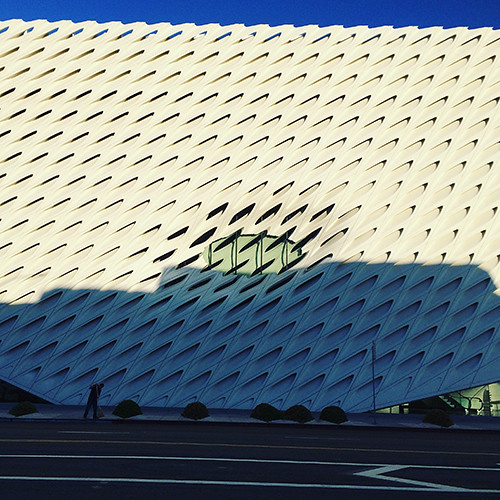
![DSCN0349 _ Untitled [New York City], 1953, Cy Twombly, Broad Museum, LA](https://c1.staticflickr.com/6/5700/21606588184_3b4ac31848.jpg)
